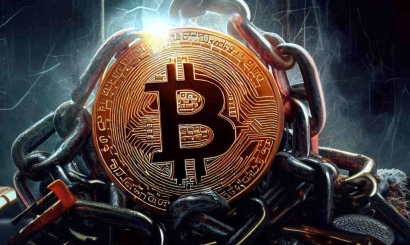The word "scam" became widespread during the ICO boom, referring to fraudulent activities in cryptocurrency projects where teams either abandon their commitments or steal investors' funds. A typical scam follows a pattern: promoting high returns, selling tokens, pretending to operate, then vanishing with investors' money.
During 2017-2018's ICO boom, an alarming 95% of projects exhibited scam characteristics, leaving only 5% as legitimate ventures seeking growth. This imbalance severely damaged public trust in cryptocurrencies and ICOs. Rebuilding confidence required several years and new token offering approaches like IEO and IDO, where exchanges (centralized or decentralized) conduct sales after thorough project verification. While ILAO represents the latest evolution, fraudsters continue finding weaknesses in new offering methods, threatening both businesses and individual investors.
Historical Context
Deceptive trading practices have existed since trade began, with fraudsters constantly developing new methods to exploit others. The digital age has expanded scammers' capabilities, making financial crimes more anonymous and harder to prosecute. For instance, Do Kwon, linked to Terra and TerraUSD's collapse, remains free while maintaining an active social media presence.
Researchers trace mass ICO scams' origins to the dot-com bubble, when tech companies received excessive funding without clear utilization plans, leading to irrational spending and eventual market collapse. The ICO boom followed a similar pattern, though with smaller investment amounts.
While the first failed ICO remains debatable, Maxim Zaslavsky holds the distinction of being the first person formally charged with ICO fraud, causing $2-4 million in losses through his REcoin project. However, larger cryptocurrency scams have caused far greater damage.
Major Cryptocurrency Scams
OneCoin leads the list, operating from 2015 without a blockchain and causing €4 billion in losses. Africrypt follows with $3.5 billion lost after claiming to trade Bitcoin for profits. Thodex ranks third, disappearing with $2 billion in April 2021. The Vietnamese dual-ICO scam (iFan and Pincoin) resulted in $660 million in losses.
Common Fraud Schemes
Several fraud patterns dominate the cryptocurrency space:
Chameleon Scams
These involve creating convincing copies of established projects, changing only contact details. Scammers target the original project's audience with attractive offers, collect funds through their wallets, then vanish.
ICO Fraud
Initial Coin Offerings provided scammers extensive opportunities for deception. Capitalizing on public enthusiasm for blockchain technology, they created fictional projects to attract investment. Most ICOs during the boom period were either outright scams or unrealistic ventures.
Ponzi Schemes
These traditional pyramid schemes remain prevalent in cryptocurrency markets. Early investors receive returns from new investors' contributions until the scheme's inevitable collapse. Bitconnect stands as a notable example, maintaining a high position on Coinmarketcap before its downfall.
Phishing
This involves stealing wallet credentials through:
- Fake exchange websites or wallet interfaces
- Direct communication from imposters claiming to represent legitimate companies
Exit Scams
Projects operate normally for a period before suddenly disappearing with invested funds. Even some exchanges have employed this tactic, often blaming cyber attacks for their closure.
Pump & Dump
Manipulators artificially inflate an asset's price before quickly selling their holdings, causing the price to crash. The Squid Game token exemplifies this scheme, capitalizing on the popular TV series' success.
DeFi Scams
Decentralized finance faces unique fraud challenges:
- Rug Pulls. Creators establish liquidity pools with seemingly legitimate tokens, then suddenly withdraw all funds, leaving worthless assets.
- Exploits. Hackers or malicious developers target smart contract vulnerabilities, sometimes intentionally created, to steal user funds.
- Honeypots. Scammers create tokens that can only be purchased, not sold, by regular users. After aggressive marketing drives up prices, only the creators can sell their holdings.
Protecting Yourself
To avoid cryptocurrency scams, follow these guidelines:
- Avoid unrealistic profit promises
- Ignore unsolicited private investment messages
- Verify all links and communications carefully
- Research projects thoroughly before investing
- Secure storage of private keys and passwords
- Maintain healthy skepticism toward extraordinary offers
Despite extensive research into scam methods, fraudsters continue evolving their techniques, sometimes fooling even experienced investors. Success in cryptocurrency investment requires constant vigilance and thorough due diligence on every project.
The persistence of cryptocurrency scams, despite widespread awareness, stems from scammers' ability to innovate and adapt their methods. Protecting oneself requires remembering that if something seems too good to be true, it probably is, and always conducting comprehensive research before investing.







